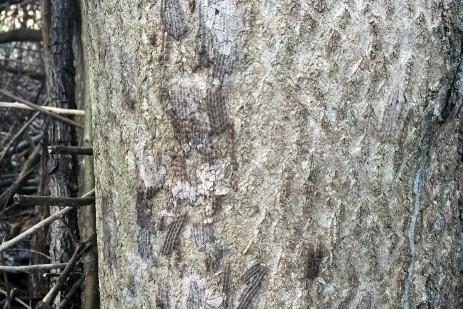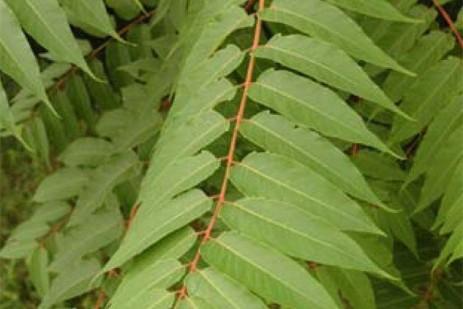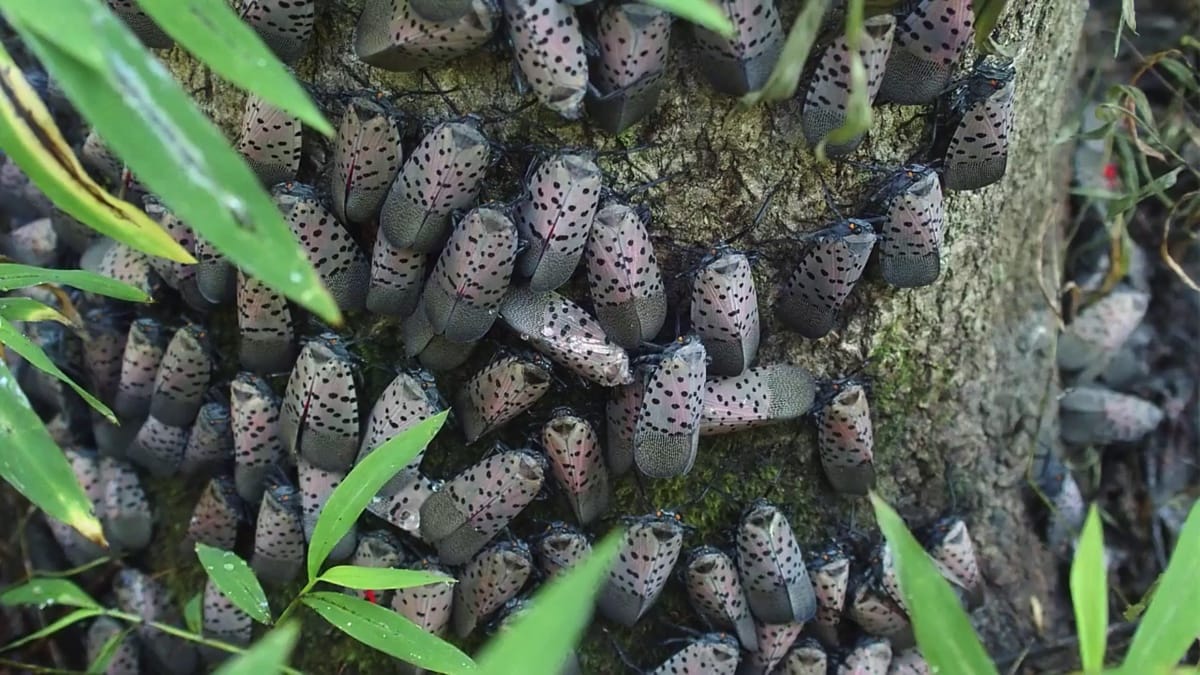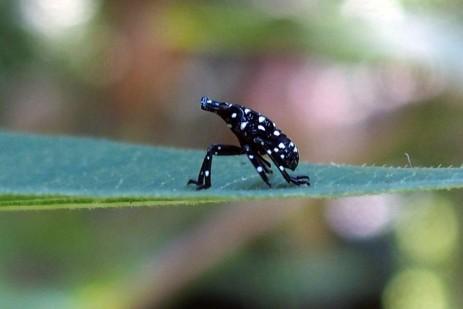Spotted Lanternflies. Photo Penn State Ext.
The Spotted Lanternfly has been identified in many neighborhoods of Berks, Chester and Montgomery counties. ( Governor Tom Wolf has placed 13 counties around and including the Philadelphia area under quarantine, a move designed to stop the pest from spreading any further. It may be already too late; the the spotted lanternfly has already been spotted in Delaware, NJ, and NY). It’s a serious, invasive pest that is a threat to apples, grapes, peaches, stone fruits and various tree species found throughout Pennsylvania. Researchers are still learning about the wide range of hosts it feeds upon.
Early this year, U.S. Secretary of Agriculture Sonny Perdue announced $17.5 million in emergency funding to stop the spread of the spotted lanternfly in southeastern Pennsylvania. That’s how serious this threat is to agricultural producers and landowners. Also, Penn State’s College of Agricultural Sciences and Penn State Extension are at the forefront of education and research aimed at stopping the spread of this destructive species.
Origin
Native to Vietnam, China, and India, it has become a major invasive species in the two places it has managed to travel to: South Korea and Pennsylvania. It was first detected in Berks County, PA in 2014. There has been a dramatic expansion in the range of this pest since then. The affected area expanded from 174 square miles in fiscal year 2016 to approximately 3,000 square miles by the end of FY 2017.
Spotted Lanternfly Nymph. Photo: E. Swackhamer, Penn State Ext.
Identification and Characteristics
The Spotted Lanternfly looks different in every stage of its development through the year. To see additional pictures, go to Penn State Extension: https://extension.psu.edu/spotted-lanternfly-identification-and-life-cycle. They don’t bite humans but they hop, fly and they’ll land on you and can cover an entire tree trunk or side of your house. They are not only destructive to many important plants, but can be very annoying.
What You Need to Know
Each female will lay up to 100 or more eggs in fall on tree trunks, rocks, and pretty much any solid object they can find.
The adult spotted lanternfly freezes to death over the winter but the egg masses overwinter and the first nymphs hatch in late April to early May which is why late March and Early April is a great time to destroy them. Killing the overwintering eggs is one way to reduce the populations of spotted lanternfly. An easy method of killing the eggs is to scrape the egg masses into a zip-lock plastic bag with some rubbing alcohol and throw away.

Spotted Lanternfly Egg Masses. Photo: E. Swackhamer, Penn State Ext.
Hosts – “Tree of Heaven”
In late summer and fall, the spotted lanternfly prefers feeding on Ailanthus altissima, commonly known as the “Tree of Heaven”. It’s a fast-growing deciduous tree that has a smooth, light gray bark with large “palm-like” leaves. They tend to grow in clumps where many individual stems share one common root system. The spotted lanternfly can be found feeding on other plants and trees, but if you have the “Tree of Heaven”, you should consider removing all the female trees because they produce seeds that make more trees. Cut trees regenerate so the stumps need to be treated with a herbicide. Remove 85% of the male trees and treat the remaining Ailanthus altissima trees with a systemic insecticide that will move throughout the tree and will cause the spotted lanternfly to die when they feed on it.

Tree of Heaven (Ailanthus Altissima). Photo: Penn State Ext.
Treating only a few trap trees with a systemic product can reduce the amount of insecticide used in the environment and may help conserve beneficial insects.
Need Help?
Whitehouse Landscaping offers complete Tree and Shrub Care services in addition to targeted spotted lanternfly applications. We can help you control any spotted lanternfly infestations with effective methods of treatment including systemic insecticide and herbicides which will treat the pest and its primary host – the invasive Tree of Heaven. After your property consultation, we will recommend treatment methods utilizing the most effective products tailored to your individual yard’s needs. We utilize integrated pest management (IPM) practices and you can count on our knowledge and experience


